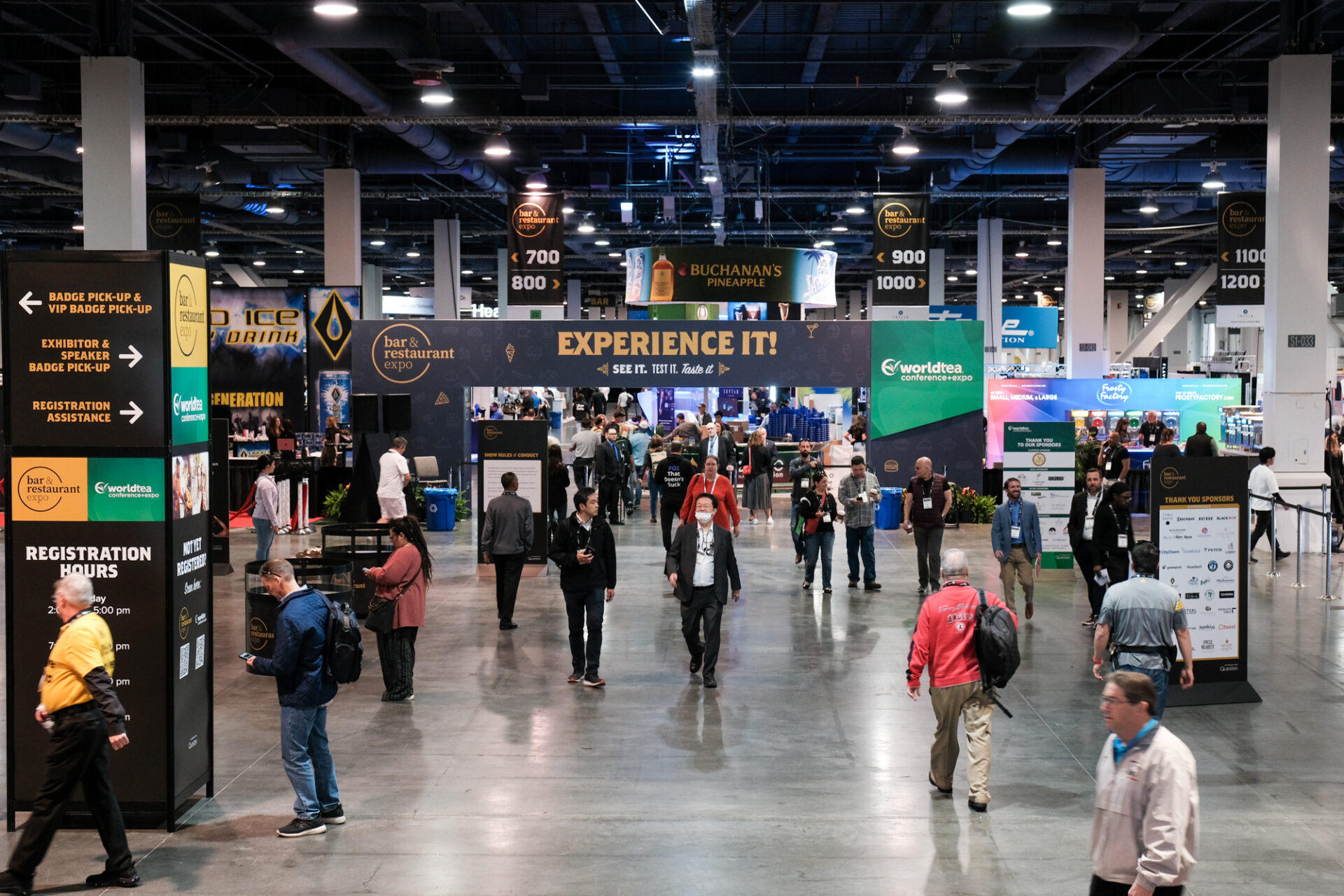Growing up in Hong Kong, tea was a fixture in my childhood.
Every weekend morning, I would go to the tea restaurants with my parents and have dim sum for breakfast. As soon as we sat down, my father would order two pots of tea — pu-erh, a fermented tea and his favorite; and shoumei, a white tea for me and my mum.
I also visited my father’s hometown in Guangzhou regularly. My uncles and aunts would take me to the Fangcun Tea Market, hopping from store to store, listening to pitches from the tea merchants while they prepared different types of tea for us, before deciding what to take home. I only found out much later that it is the largest wholesale tea market in the world.
So when DIG THE TEA assigned me to cover the World Tea Conference & Expo in Las Vegas on March 27-29, I envisioned something I am familiar with — abundance of loose-leaf tea from the tea-producing countries like China, Sri Lanka and Japan, beautiful teaware dedicated to elevate the tea-drinking experience, and more than anything, a market filled with tea lovers.
I was right, but not exactly.
The US tea landscape
First, let’s start with the tea-drinking culture in the US. According to 2021 data published by the Tea Association of the USA, over 159 million Americans, or close to half of its population, are drinking tea on any given day. I was surprised by the sheer amount of tea drinkers in the country — only to find out a couple of lines later in the same report that 75-80% of tea consumed in the US is iced. On top of that, most of them are served in cans or bottles, often flavored and sweetened. In other words, hot tea brewed from loose leaves is a minority here.
Then, the definition of tea. Pu-erh, oolong, gyokuro, sencha, ceylon… There are many types of tea that depict the geography, growing environment and manufacturing processes, but at least they share the common ground that they are all products of the tea plant, camellia sinensis. On the other hand, the word “tea” covers a much wider spectrum of beverages in the US. Everything from 100% tea leaves to tea blends to herbal drinks are all seen as “tea” in the eyes of US consumers.
With this context in mind, the landscape that I was about to witness at the World Tea Expo began to make sense.
I arrived at the Las Vegas Convention Center, where the expo took place, on the first day of the three-day event to pick up my attendee badge. The front entrance was decorated with a giant banner divided into two parts. The first part took up almost the entire surface area and read, “ Bar & Restaurant Expo: Experience it! See it. Test it. Taste it.” The other part, “World Tea Conference & Expo,” was so small that I would have missed it if I didn’t look for it attentively.

“Are you coming for alcohol or tea?” a check-in staff member asked with a big grin on his face.
It took me a second to understand his true question was, did I register for the bar or tea conference? Tea please, I replied.
“Here you go,” he handed me a green badge, reminding me I could also check out the exhibitors on the bar & restaurant side anytime. Participants who registered for the bar exhibition had a brown badge.
I knew I would have access to both events when I signed up, but what I didn’t realize was that they actually shared the same venue. The front entrance banner I saw earlier was, in fact, a fairly good representation of the bar-to-tea ratio on the expo floor: 400 of the total 500 exhibitors were for the bar & restaurant event, while the remaining 100 were for the tea expo.
After going through a security check with my newly-acquired badge, I found myself surrounded by companies selling disco lights, vacuum cleaners, carbonators and all sorts of devices. Speakers blasted out music from all directions, attendees slowly moved through crowded aisles with cups in hand, mostly filled with samples of the latest alcoholic beverages. That’s the bar section. The tea zone was deep in the middle of the gigantic hall, while the restaurant booths were at the back.
I breathed a sigh of relief as I finally arrived at the tea corner. There wasn’t an obvious partition to separate it from the bar area, but somehow I knew immediately I had entered a different space — maybe it was the tapered music volume, maybe because there were more exhibitors from Asia rather than the US, or maybe there were simply fewer visitors. I couldn’t pinpoint a reason, but the distinction was clear.
Testing the water
“Do you want to try some Japanese tea?” a salesman asked in English politely, as he walked out of his booth with a welcoming smile. He gave me his name card: Hideto Matsuura, managing director of Sasaki Green Tea.
Sencha, macha, hojicha, genmaicha… The tea manufacturer from Kakegawa city, Shizuoka prefecture had brought its elaborate product lineup to the expo, putting them on display in small dishes for buyers to inspect and smell.
“We are latecomers to the US market, but at least we are here finally,” said Matsuura, signaling me to try the four different types of tea and tea blends on the table. “We are conducting market research. When you finish tasting all of them, can you cast two votes: one for the one you like the most, and the other for the one you like the least?”
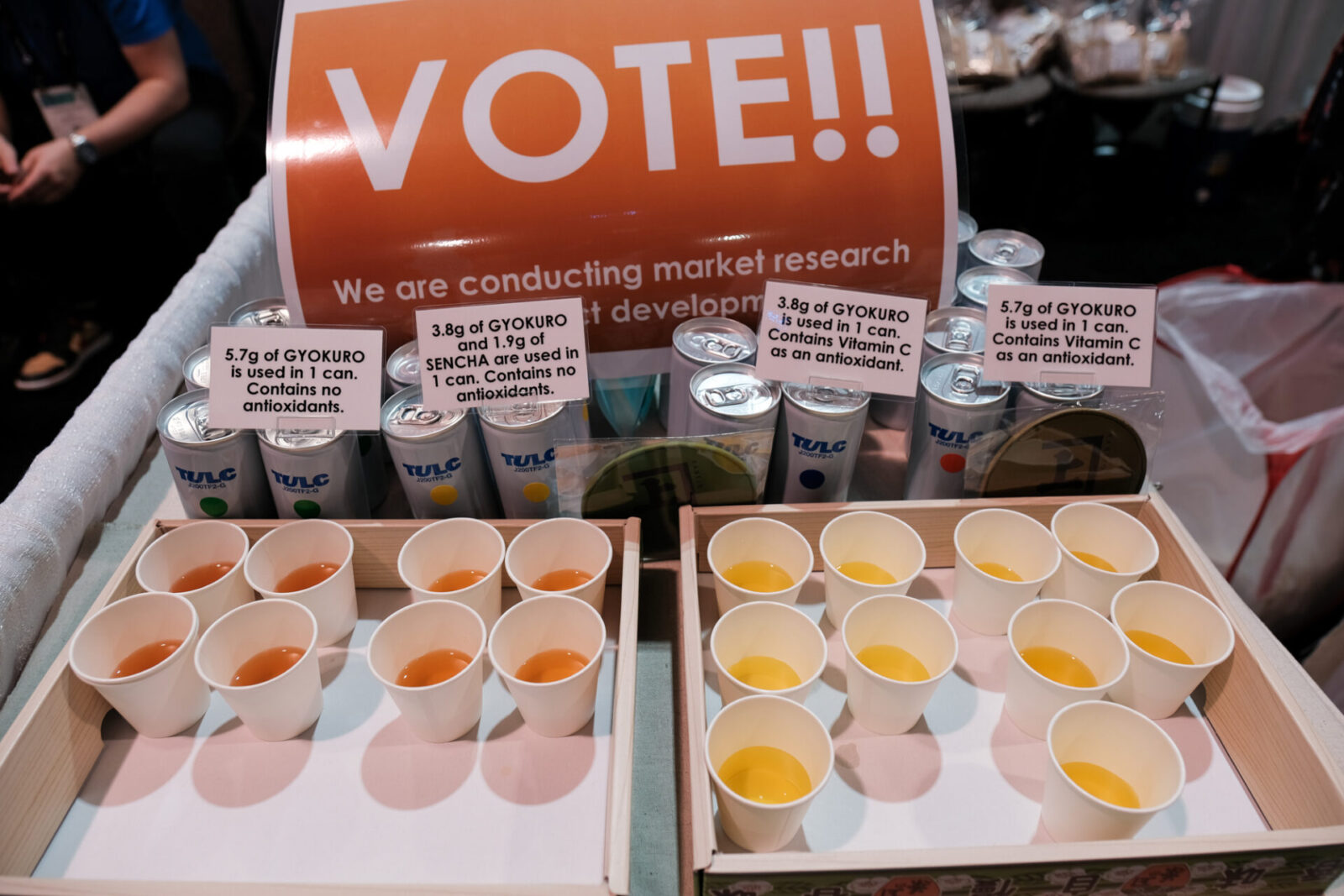
I looked at the labels of each tea: 5.7g of gyokuro in 1 can; 3.8g of gyokuro and 1.9g of sencha in 1 can; 3.8g of gyokuro with vitamin C; 5.7g of gyokuro with vitamin c.
I tasted them in that order. The answer was obvious.
I told Matsuura that the gyokuro and sencha blend was my favorite, because of its depth in sweetness and bitterness. The vitamin C versions, especially the one with lower gyokuro content, were bland and hence my least favorites.
“Japanese consumers say the same,” Matsuura nodded with a wry grin. “But in the US, it’s the exact opposite. That’s why we want to do more research to find out what tea drinkers in this country like.”
The majority of US consumers drink tea for its function — either to quench their thirst or to reap its health benefits, not for the experience it brings. Most of the tea available in the market, served in ready-to-drink or tea-bag formats, have a simple and muted profile.
The natural sweetness of gyokuro, coupled with vitamin C to dilute its characteristic, suits the American palette. No wonder, I thought to myself. High-quality tea usually has a more sophisticated profile. And that, pun intended, is just not their cup of tea.
That said, there are signs that US consumers have a rising appetite to “taste” rather than just “drink” tea. Revenue in the tea segment — excluding herbal tea, instant tea, iced tea or ready-to-drink tea — will likely reach USD 15 billion this year and grow 3.1% annually over the next two years, according to data from Statista.
Competing in the red ocean
Every exhibitor came to the conference to tap into this emerging market. Many of them were manufacturers from tea-growing countries, such as China, Japan, Nepal, South Korea and Sri Lanka, others were small-and-medium-sized blenders from everywhere else — El Salvador, Jamaica and Tanzania to name a few.
As I walked down each and every aisle, it became clear to me that there were three tactics to stand out from the crowd.
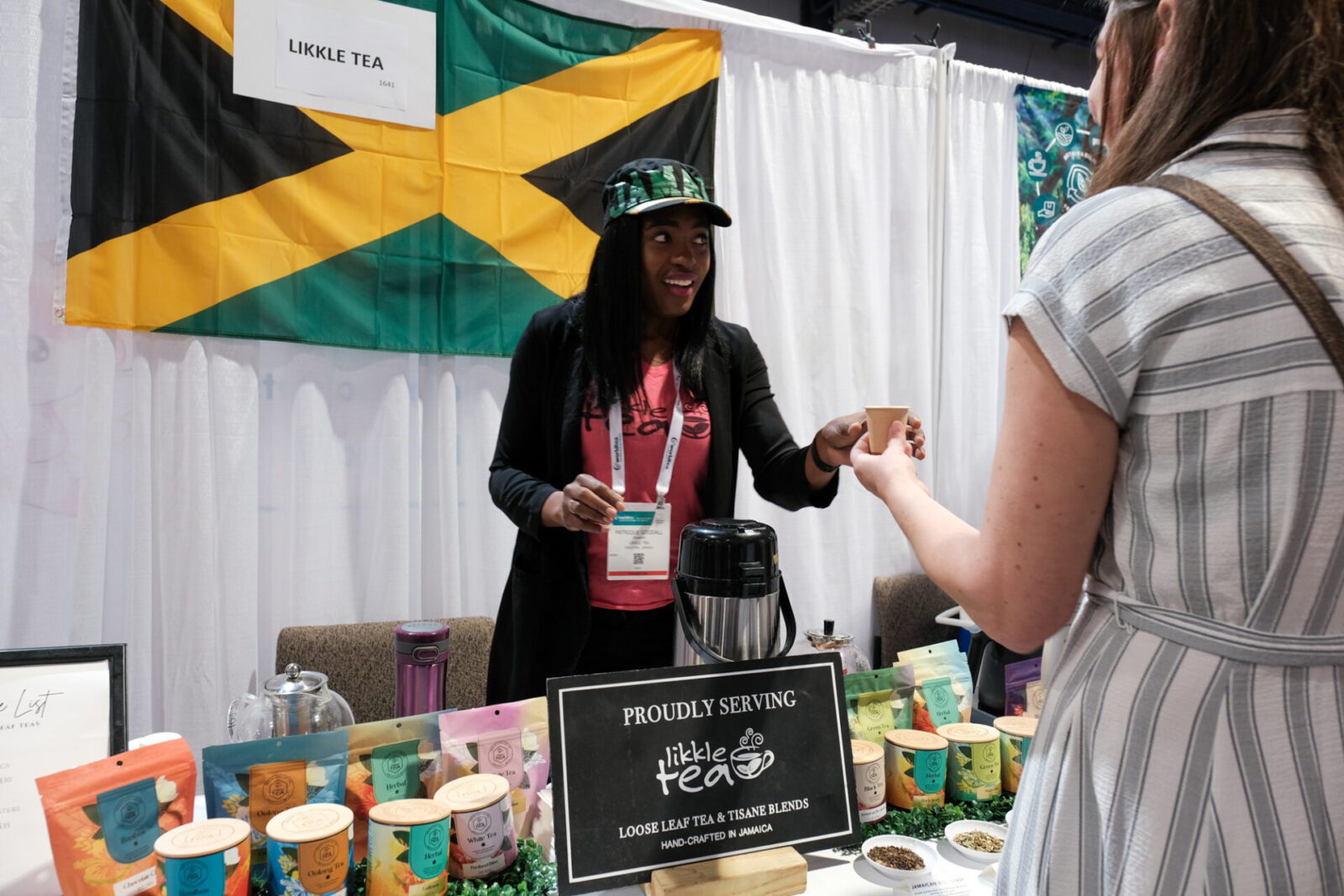
Quality was usually the first selling point. Handcrafted by a tea sommelier, grown organically, or certified by a taste institute… Anything that could add appeal and trust to the tea brand.
Then there was originality. A unique tea blend, an ingredient specific to a region, or a beautiful package… Anything that could catch the attention of a passing visitor.
And to top that off, social responsibility. Fair trade, carbon neutral, woman empowerment… anything that could infuse the brand with a sense of purpose and mission.
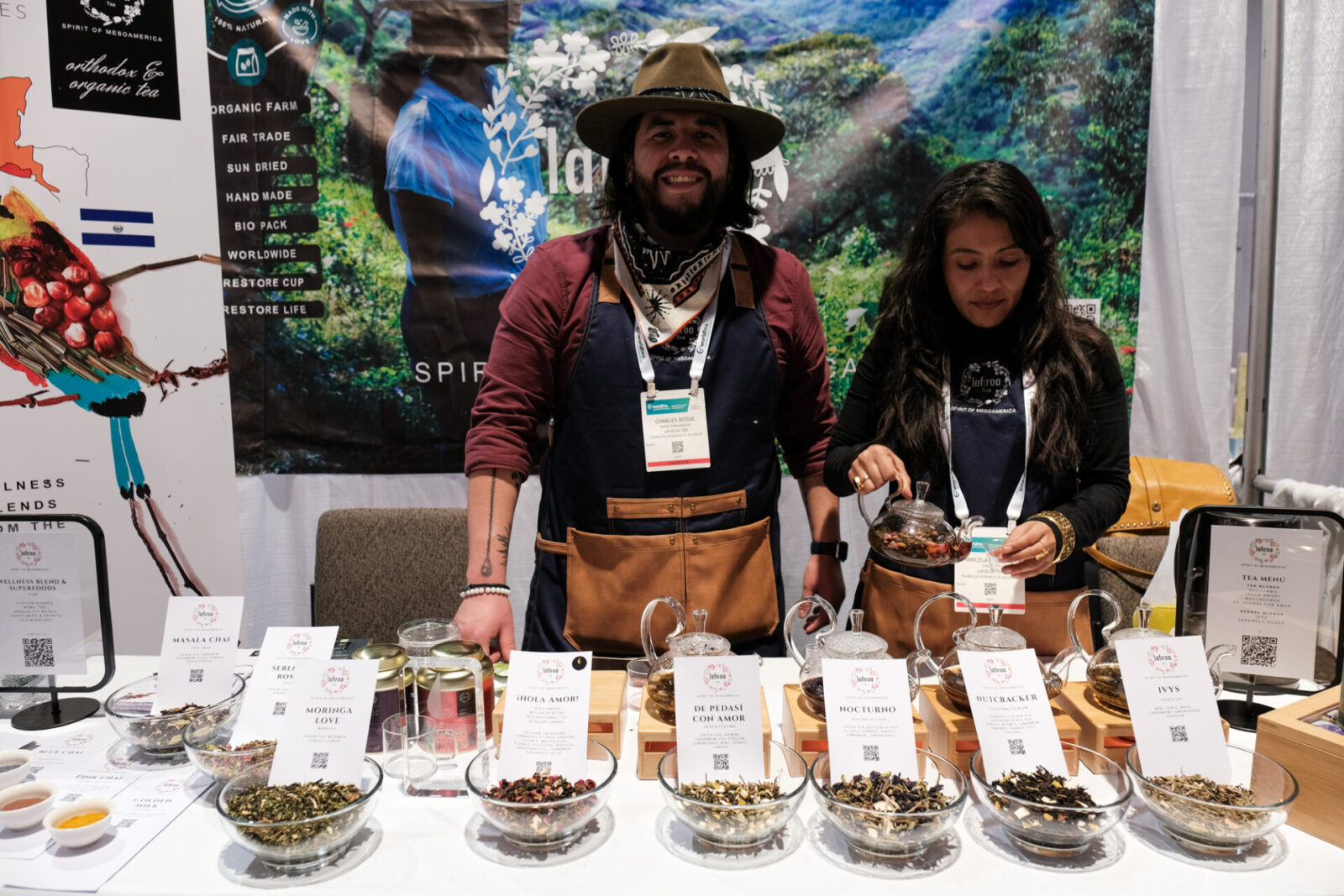
The problem was, everyone was using the same tactics. When they are all serving high-quality and original products, each having a positive impact on the society, what else can they do to break out of the red ocean and differentiate itself from others?
Interesting, but…?
I continued to walk around as I pondered the question. It was then when I saw two men working behind an espresso machine. They placed loose tea leaves into the basket of the portafilter, clipped it onto the machine, pressed a few buttons, and voila — freshly brewed tea came out a minute or two later.
There was a queue in front of the booth, waiting to taste tea prepared by an espresso machine. Apparently many people, including myself, were intrigued by the concept. So when it was finally my turn, I pulled one of the staff members aside.
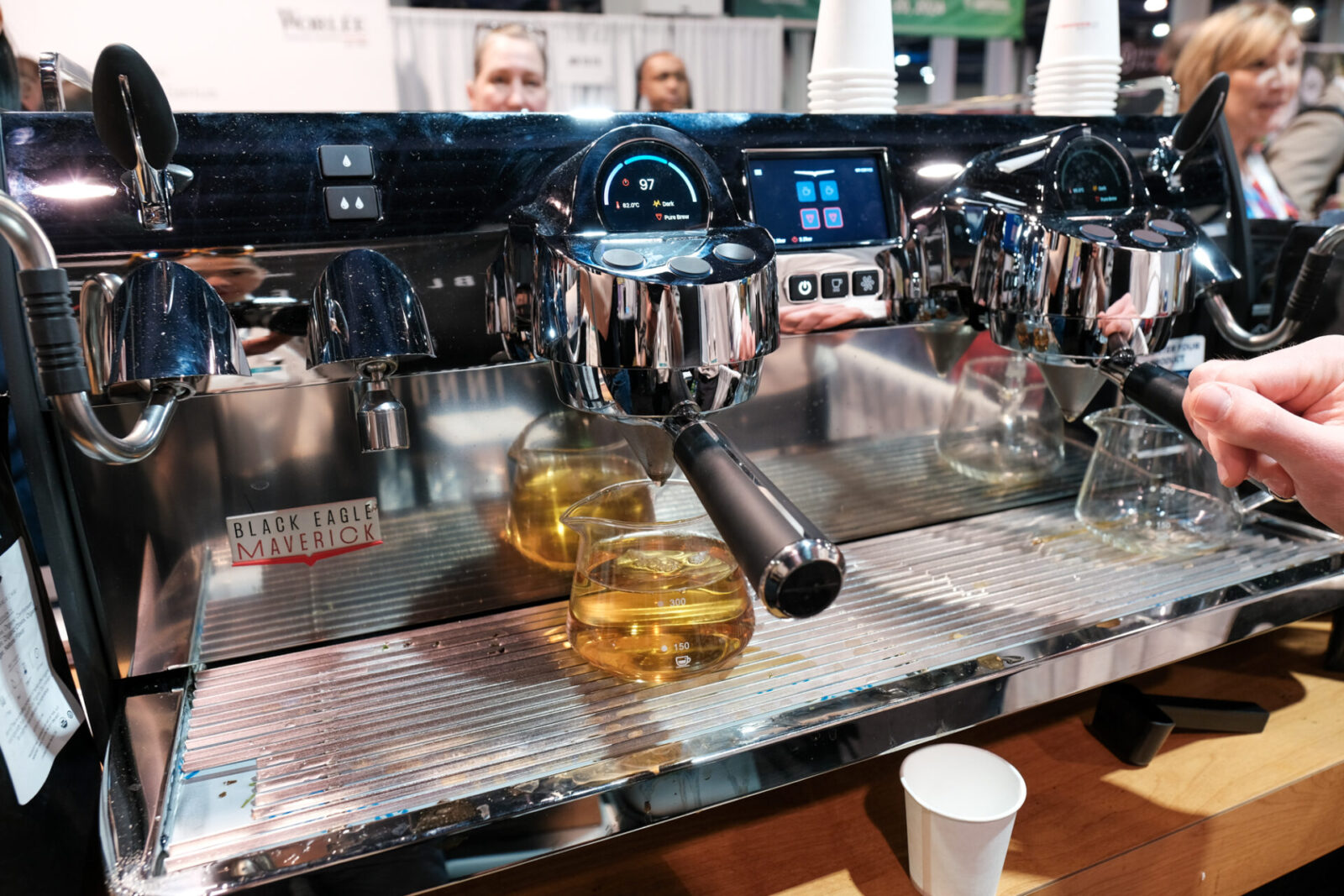
Payton Mittenzwei, account manager at Simonelli USA, told me it is a semi-automatic machine that can extract both coffee and tea. Simonelli is an Italian company that makes espresso machines under the brands Nuova Simonelli and Victoria Arduino.
“It is simple to brew tea with Black Eagle Maverick,” Mittenzwei said as he demonstrated the process. “You choose the water temperature, pressure and brew time, and it will do the rest for you.”
The same technology also allows baristas to quickly prepare filter coffee, which would normally take much longer if done in pour-over style. Another benefit, Mittenzwei added.
The versatility, of course, comes with a price. Black Eagle costs at least 30% more than models that can only make espresso-based beverages.
If I am a specialty coffee shop owner, I would have already invested in a professional-grade espresso machine. Why would I be interested in upgrading my workhorse to cater for tea drinkers, who are not my main customers to begin with?
If I run a tea room business, I would prefer brewing my tea with the traditional, manual method — high-quality loose leaves, good brewing techniques and dedicated tea ware — no bells and whistles. My customers are coming for the experience, not for the efficiency anyway. Why would I outsource that process to a high-tech machine?
Maybe a nationwide coffee chain that has a lot of daily traffic would find the product appealing? But then how likely would such a buyer attend a tea conference filled predominately with tea wholesalers?
Defining innovation
Innovation is often understood as a synonym for creating something new. But being new is only one of the three components.
An innovative product should have a well-defined problem statement — who are its target customers and what problems is the product solving? This is the foundation that separates a product from being interesting to being useful.
Then, it should approach the problems with novel techniques or technologies. This is where a product differentiates itself from its peers and creates most of its value.
And finally, business viability. This is the most ambiguous part, because oftentimes it takes a while for the market demand to catch up with a brand new idea, and it’s hard to project how much revenue it will generate. But at the very least, how does a viable business model look like and what needs to be true for that to happen?
I walked towards the back of the expo hall, where exhibitors pitched their ideas in an innovation contest. There I saw Sharyn Johnston, founder of Australian Tea Masters, on the stage.
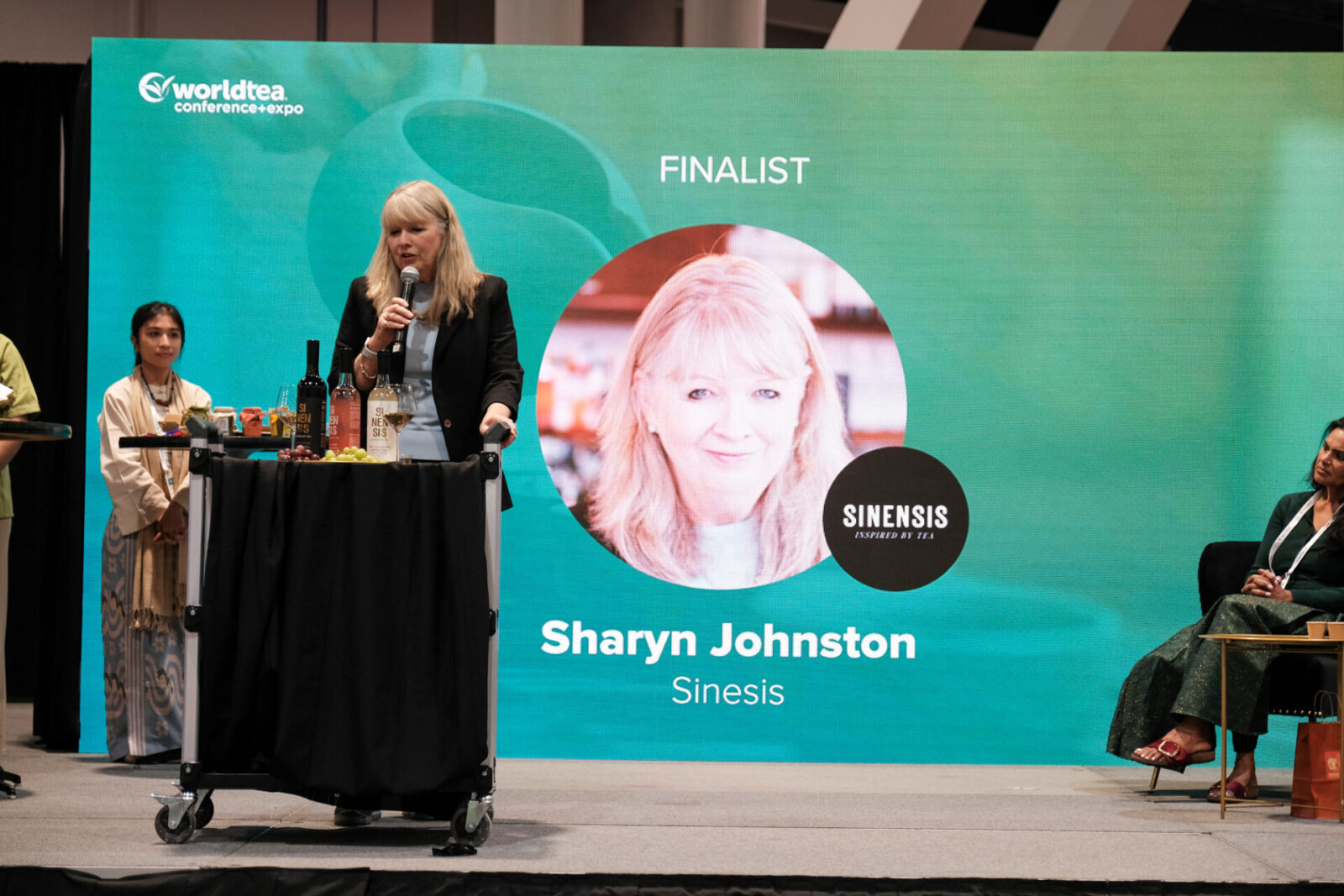
I met Johnston earlier in the day when she was speaking in a workshop about how to stock and use different herbs, how to blend them, and how to market the products. Her company, Australian Tea Masters, is a one-stop provider of everything tea-related, from selling teas and herbs sourced around the world, custom blending and business consulting, to tea education.
Now Sharyn was introducing her brainchilds — a trio of non-alcoholic, wine alternatives — to the judges. There was a “sauvignon blanc,” a fusion of chardonnay grapes and green tea; a “rosé,” a blend of shiraz grapes and white tea; and a “shiraz” made with shiraz grapes and Himalayan black tea. She named the brand “Sinensis,” a reference to the scientific name of the tea plant.
I have already tried all of them and tasted first-hand how ground-breaking they were. The flavors, the aroma, the complexity, the finish… every bit of Sinensis was unique and unmatched by its non-alcoholic peers. Retail price of a bottle of Sinensis is AUD 22 (about USD 15), similar to the price of a decent yet affordable table wine.
Her assistant poured the drinks into wine glasses and passed them to the judges one after another. I watched their facial expressions closely as they took a sip. Initially they looked skeptical, then by the second glass they looked surprised and were in disbelief, and by the third, they were delighted and completely sold.
Sinensis, the judges announced, was the winner of the innovation award.
Sharyn’s creation not only demonstrated her mastery as a tea blender, but also her business instinct to respond to a rising demand for non-alcoholic drinks. Between August 2021 and August 2022, sales of non-alcoholic beverages in the US rose 21% year-on-year to USD 395 million, according to a report by NielsenIQ.
“Younger Gen Z consumers are less interested in drinking alcohol than previous generations,” the report wrote. “But there has also been a wider wellness movement taking place throughout society, with more people from every age and stage of life trying to take better care of themselves.”
After the competition, I spoke to Sharyn again at her booth and congratulated her for winning the award. “We just launched Sinensis in Australia, and now I already got a lot of people asking me when I can ship them overseas!” Sharyn said happily.
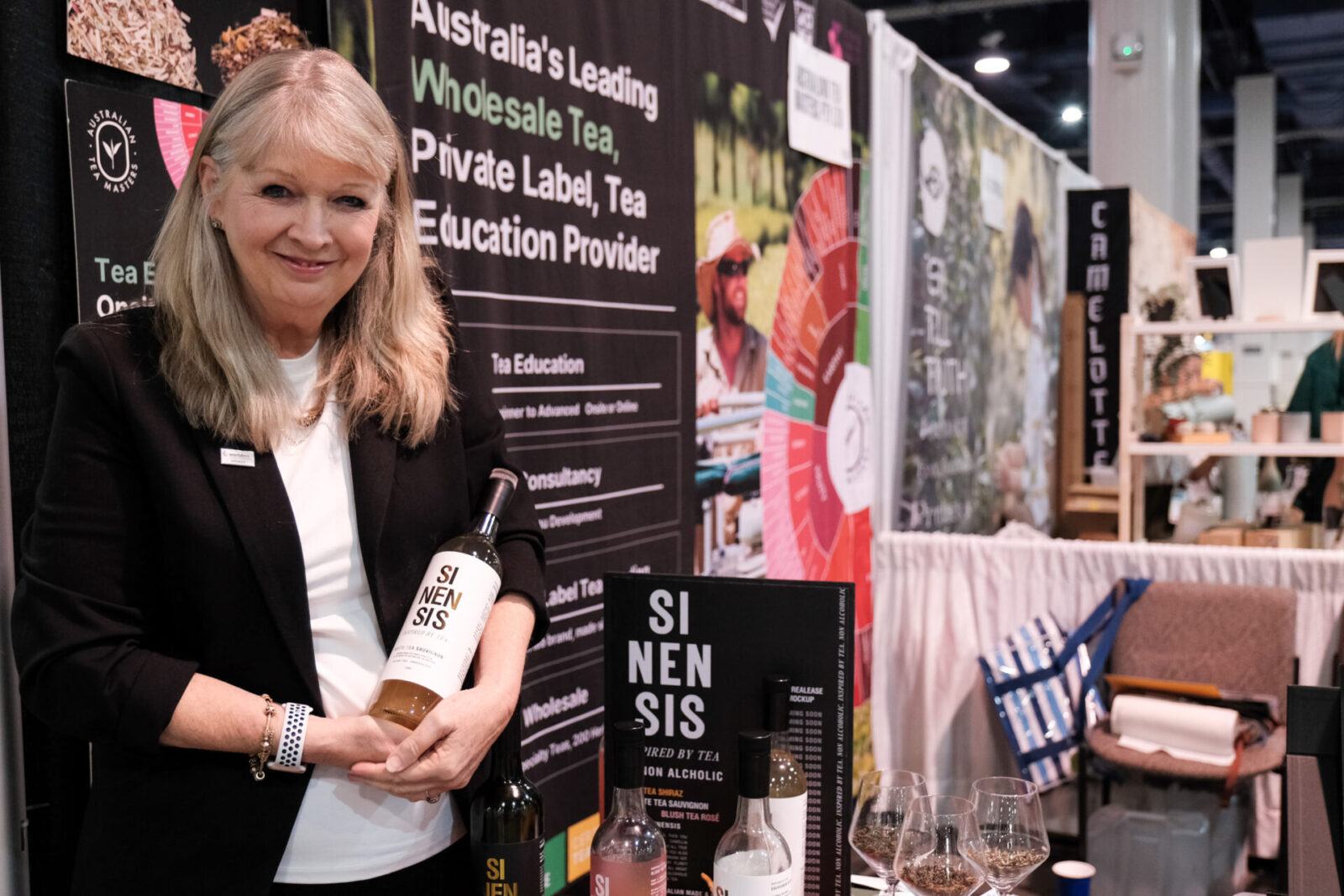
I waved goodbye and left the convention center. It’s been a long day. I was tired, but also energized by the encounter with Sharyn.
Desirable, technically feasible, and financially viable — Sinensis has cracked the code of innovation. I can already envision a future in which the beverage takes both the alcohol and non-alcohol industries by storm, even in my hometown Hong Kong, where people are spoiled high-quality tea and wine.
Text and photographs by Marco Lui
Marco is a design researcher who works with small to large companies to develop new products and services. Before stepping into the world of design consulting, he spent 10 years working as a financial journalist in Hong Kong, Tokyo and New York. Marco is also the host of KIKITE, an interview podcast.
Editor and creator of the future through words. Former associate editor of Huffington Post Japan. Became independent after working for a publishing company and overseas news media. Assists in communications for corporates and various projects. Born in Gifu, loves cats.
Marco is a design researcher who works with small to large companies to develop new products and services. Before stepping into the world of design consulting, he spent 10 years working as a financial journalist in Hong Kong, Tokyo and New York. Marco is also the host of KIKITE, an interview podcast.
